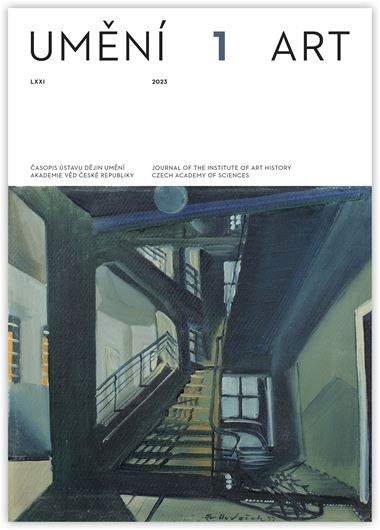Achim Timmermann
‘In ere des hilgen bischops unde hovetheren sunte Liborius…’: Westphalian Relic Tabernacles on the Eve of the Protestant Reformation
This is Part 2 of a two-part study on microarchitectural relic tabernacles or Heiltumshäuser constructed in churches along Westphalia’s Hellweg during the century and half before the introduction of the Protestant Reformation (Part 1 was likewise published in this journal; see Achim Timmermann, ‘dem heyligen Cruse to Werle...’: The Architectural Presentation of Civic Relics along Westphalia’s Hellweg, ca. 1370–ca. 1430’, Umĕní LXX, 2022, pp. 2–18). In the current article, I explore five Heiltumshäuser erected mainly in ecclesiastical institutions between the very end of the fifteenth century and the 1520s, including the turriform tabernacles of St Mariae auf dem Berge in Herford, the Cathedral of Sts Maria, Liborius and Kilian in Paderborn, and the Augustinian Nunnery Church of St Walburga in Soest. I argue that by the late fifteenth century, century, architects, artists, patrons and relic scenographers no longer endeavored to generate what might be called archetypal designs — exemplified by the “first-generation” relic houses discussed in Part I of this study — but were instead driven by a novel form of mimetic rivalry, which led to the creation of a uniform artistic landscape in which relic tabernacles were both ‘at war’ with each other, and with the much more numerous sacrament houses that were popping up all around them. Because of their almost identical ways of enshrining and staging the sacred, which revolved around the production of rectilinear frameworks that guided the pious gaze, both late fifteenth- century sacrament houses and Heiltumshäuser were part and parcel of a new kind of scopic regime, in which access to the divine was mediated through physical withdrawal and simultaneous visual substitution. With their enclosed, grilled relic compartments and obfuscatory pyramids, Westphalia’s later relic houses were objects lessons in the auratization of sacred matter, whether it be the body of a saint (as at Paderborn), a reliquary statuette (as at Soest) or the fragment of a tree trunk (as at Herford). Beyond channeling the sacred gaze, they functioned as lithic memorials to individual and collective egos, and despite their relative sameness, as powerful markers of institutional identity.
Author's email:
achimtim@umich.edu
DOI: HTTPS://DOI.ORG/10.54759/ART-2023-0101
Full-text in the Digital Library of the Czech Academy of Sciences:
https://kramerius.lib.cas.cz/uuid/uuid:6172780a-6785-49bf-842b-ef52af4ed048
< back

